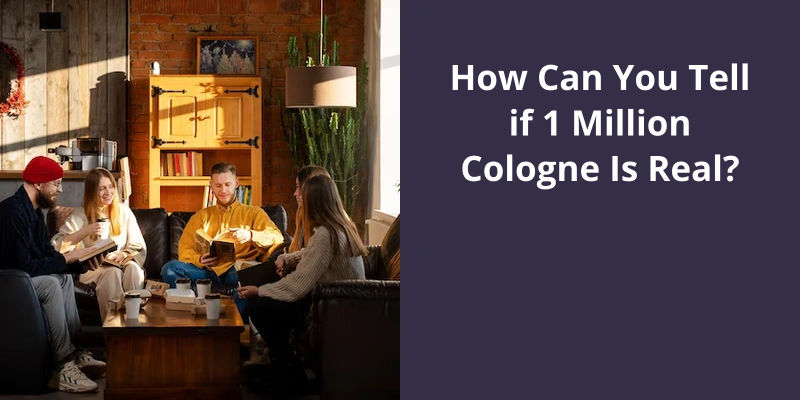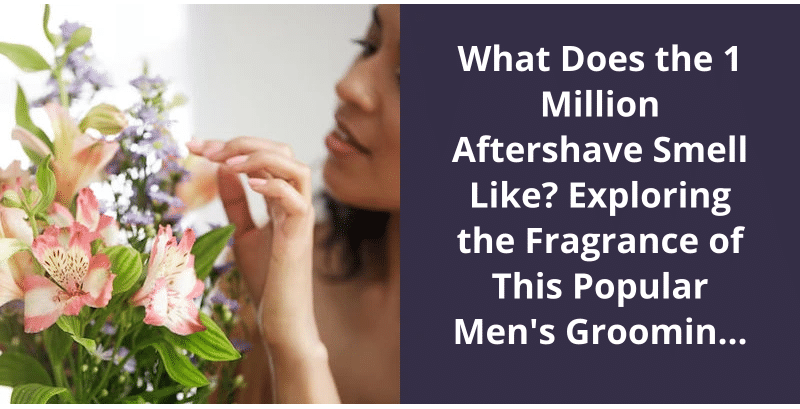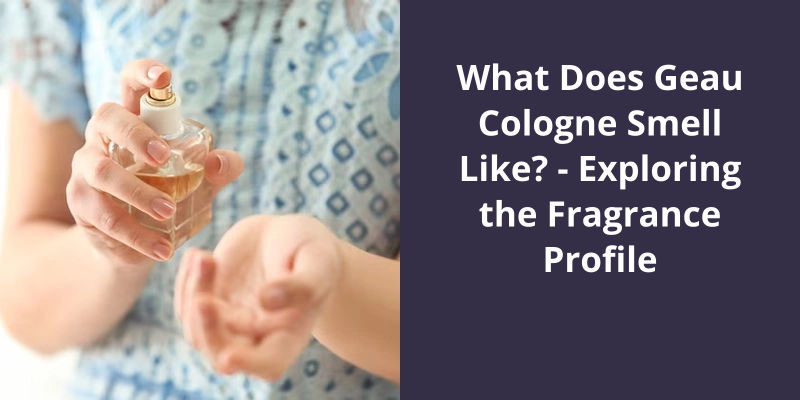Determining the authenticity of 1 Million Cologne involves several steps. First, check the packaging quality; genuine cologne is typically boxed in high-quality, flawless packaging while counterfeits may have minor errors or look shabby. Secondly, examine the serial number on both the bottle and the package, which should match and be clearly printed. Next, evaluate the scent; authentic 1 Million Cologne by Paco Rabanne has a unique, long-lasting scent that cannot be replicated exactly by counterfeits. If you notice an unpleasant, strong, or fast-fading scent, it may be a fake. Lastly, consider the price: if the deal is too good to be true, it probably is. Real cologne doesn’t come cheap, and a significantly lower price is often a red flag of a counterfeit product.

Do Fake Perfumes Smell Like the Original?
Counterfeit perfumes may initially appear to smell like the original, but there are several telltale signs that can help determine their authenticity. Firstly, when it comes to quality, fake fragrances often lack the same level of craftsmanship as their genuine counterparts. This can manifest in a variety of ways, such as inconsistencies in the scent itself or an overall weaker composition. Authentic perfumes are carefully formulated by expert perfumers, resulting in a balanced and long-lasting fragrance.
Methods Used to Detect Counterfeit Perfumes
There are several methods that can be used to detect counterfeit perfumes. One common method is to check the packaging and labeling for any signs of poor quality or inconsistencies. Genuine perfumes often have high-quality packaging with fine detailing, while counterfeit ones may have blurry prints or misspellings.
Another way to distinguish authentic perfumes from fakes is by inspecting the bottle. Legitimate bottles usually have a solid feel, well-fitted caps, and clear labels. Counterfeit bottles may have uneven seams, loose caps, or unclear markings.
The scent of the perfume can also be an indicator of it’s authenticity. Genuine perfumes are created using high-quality ingredients, resulting in a well-balanced and long-lasting fragrance. Counterfeit perfumes, on the other hand, often contain lower-quality ingredients which can lead to a weak or unpleasant scent.
It’s important to note that purchasing perfumes from authorized retailers or reputable websites reduces the risk of buying counterfeit products. Additionally, consulting experts or professionals in the fragrance industry can provide valuable guidance in identifying genuine perfumes.
As counterfeit perfumes continue to flood the market, it’s crucial to understand the shocking truth behind their production. Senior vice president and publisher of Harper’s Bazaar, Valerie Salembier, has made it her personal mission to uncover the alarming ingredients used in these fake fragrances. Disturbingly, counterfeit perfumes often contain a disturbing concoction ranging from urine and bacteria to even antifreeze. Stay tuned as we delve deeper into the hazardous world of fraudulent fragrance production.
What Are Fake Perfumes Made Of?
In their relentless quest to deceive consumers and turn a profit, counterfeiters have no boundaries when it comes to creating fake perfumes. The ingredients found in these counterfeit fragrances are far from glamorous and can be rather disturbing. Valerie Salembier, senior vice president and publisher of Harpers Bazaar, has dedicated over six years to exposing counterfeits and shedding light on the dark world of fake fragrance.
Among the repugnant ingredients used in fake perfumes are urine, which is both unhygienic and repulsive beyond measure. Counterfeiters have no qualms about incorporating this bodily fluid into their concoctions, further fueling the need to steer clear of fake fragrances. Additionally, bacteria, known for it’s ability to cause harm and infections, is another troubling component found in these counterfeits. It’s alarming to think that something intended for personal use could potentially pose such health risks.
Antifreeze, an extremely toxic substance commonly used in car engines, is yet another ingredient found in the realm of counterfeit perfumes. The presence of antifreeze raises serious concerns about the safety of these fraudulent products, as it’s been linked to severe health issues and even fatalities when ingested. The fact that counterfeiters are willing to include such hazardous substances in their counterfeit fragrances highlights their complete disregard for consumer well-being.
It’s crucial for consumers to be aware of the risks associated with counterfeit fragrances and actively seek ways to differentiate genuine products from fake ones. This awareness empowers individuals to make informed decisions and ensures they can enjoy the enticing scents of genuine fragrances without compromising their health.
Methods for Detecting Fake Perfumes
There are several methods to help you determine if a 1 Million Cologne perfume is real or fake. One of the most noticeable clues is the packaging. Genuine perfumes typically have high-quality, well-designed boxes and bottles, while counterfeit ones may have poor craftsmanship or misspellings on the packaging.
Examining the bottle and it’s components is another way to spot a fake. Authentic perfumes often have clear, crisp labels with accurate information about the scent and brand. Counterfeit perfumes may have blurry or poorly printed labels, uneven fonts, and inconsistent colors.
The scent itself can also be an indicator of authenticity. If you’re familiar with the genuine fragrance, you can compare it to the suspected fake. Counterfeit perfumes may have a noticeably different aroma, weaker concentration, or an unpleasant odor due to low-quality ingredients.
Purchasing from authorized retailers or directly from the brand’s official website is the safest way to ensure you’re getting a genuine 1 Million Cologne perfume. These sources guarantee authenticity, while buying from unofficial sellers or suspicious websites increases the likelihood of receiving a counterfeit product.
Additionally, checking for the presence of product codes, batch numbers, and manufacturing information can provide further authenticity verification. Genuine perfumes often have unique identifiers that can be verified by contacting the brand’s customer service or checking their official websites.
By utilizing these methods and practicing caution when making a purchase, you can increase your chances of obtaining an authentic 1 Million Cologne perfume.
Once you’ve found a cologne that captures your attention, it’s natural to want to test it out on your own skin and experience it’s true aroma. A simple and effective way to do this is by applying a spritz onto your wrist and patiently waiting for it to mingle with your body chemistry. After giving it a few moments to settle, you can then bring your wrist up to your nose and take in the scent, allowing you to gauge it’s compatibility with your personal preferences.
How Can I Test My Cologne at Home?
If youre wondering how to test your cologne at home, there are a few simple steps you can follow. First and foremost, it’s important to choose a fragrance that you love and that suits your personal style. Once you’ve found the perfect scent, it’s time to see how it smells on your skin.
Be careful not to apply too much, as this can overwhelm your senses and make it difficult to truly appreciate the scent. After spraying, let the cologne drop onto your side and wait for about 20 seconds to allow the fragrance to settle on your skin.
Once the scent has had a chance to dry slightly, bring your wrist to your nose and inhale deeply. Take note of the initial impression the fragrance makes on your senses. Does it smell pleasant and appealing? Does it complement your unique body chemistry? Pay attention to the different notes and how they blend together to create the overall aroma.
As you continue to evaluate the fragrance, keep in mind that the scent may evolve over time. Some colognes have top, middle, and base notes that develop and change as the fragrance wears off.
In addition to testing the fragrance on your own skin, you can also ask for opinions from family or friends. Others may perceive the scent differently than you do, and their feedback can be valuable in determining whether the cologne is a good fit for you.
When it comes to purchasing cologne, it’s important to familiarize yourself with the concept of testers. These are essentially bottles of the original perfume that are wrapped in cardboard or bubble wrap instead of the usual branded packaging, and they may or may not come with a cap. However, it’s worth noting that testers aren’t any stronger or longer-lasting on your skin compared to the regular versions.
When Buying Cologne What Is a Tester?
When buying cologne, it’s important to be aware of what a tester is. Testers are simply bottles of the original perfume wrapped in cardboard or bubble wrap instead of branded packaging. They may or may not have a cap, but this doesn’t affect the quality or authenticity of the fragrance. It’s a common misconception that testers are stronger or last longer on the skin than the original product, but this isn’t the case.
The purpose of a tester is to allow potential buyers to sample the fragrance without the fancy packaging. They’re often used in stores as a way to promote the scent and encourage customers to make a purchase.
When purchasing a tester, it’s important to ensure that it’s from a reputable seller. There are many counterfeit fragrances on the market, and testers can be vulnerable to counterfeiting as well. One way to tell if a tester is real is by checking the authenticity of the seller. Reputable sellers are more likely to sell genuine products, while sellers with low ratings or a lack of customer reviews may be more likely to sell counterfeit items.
Genuine testers may have slightly different packaging than the original product, but it should still be of good quality. Look for any signs of poor craftsmanship, such as misaligned labels or poorly printed text. The fragrance itself should also be of good quality, with a scent that matches the original product.
How to Spot a Fake Tester Cologne
- Compare the packaging – Look for any misspelled words or irregularities in the design.
- Examine the bottle – Genuine tester cologne bottles usually have a “tester” or “not for resale” label.
- Check the color and consistency – Fake tester colognes may have a different color or consistency compared to the authentic ones.
- Inspect the scent – Authentic tester colognes typically have the same scent as the original product.
- Verify the batch code – Look for a batch code on the box or bottle and research it’s authenticity using online resources.
- Buy from reputable retailers – Purchase tester colognes from authorized sellers to ensure their authenticity.
- Consider the price – If the price seems too good to be true, it’s likely a fake tester cologne.
- Trust your instincts – If something feels off about the product or the seller, it’s better to be cautious and avoid purchasing it.
Source: What’s the difference between regular and tester cologne?..
Conclusion
In conclusion, determining the authenticity of 1 Million cologne by Paco Rabanne relies on careful observation and attention to detail. If this number is missing or doesn’t align, it’s a strong indication of a counterfeit product. By familiarizing oneself with these important markers, one can confidently discern the authenticity of 1 Million cologne and ensure the purchase of a genuine fragrance.





